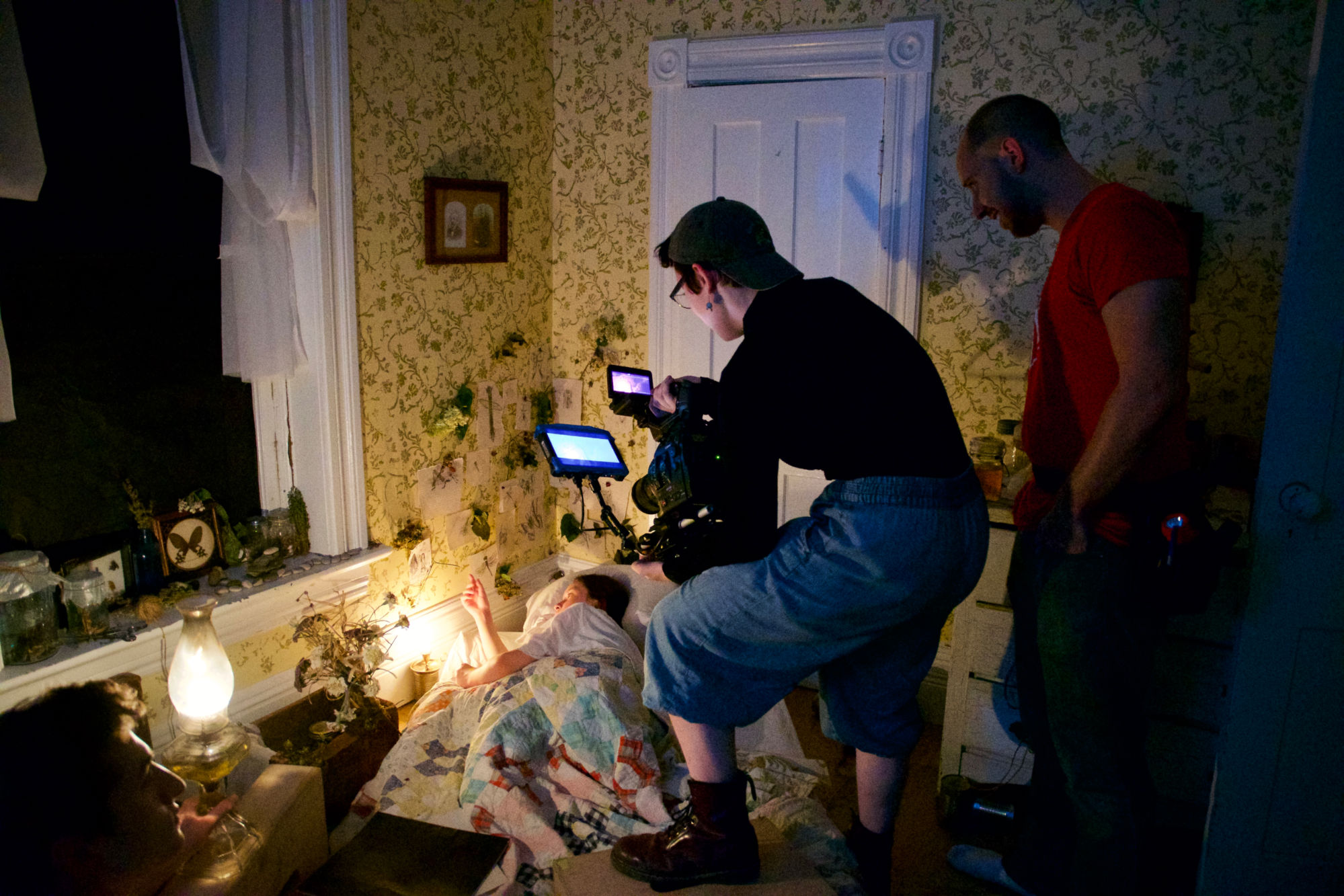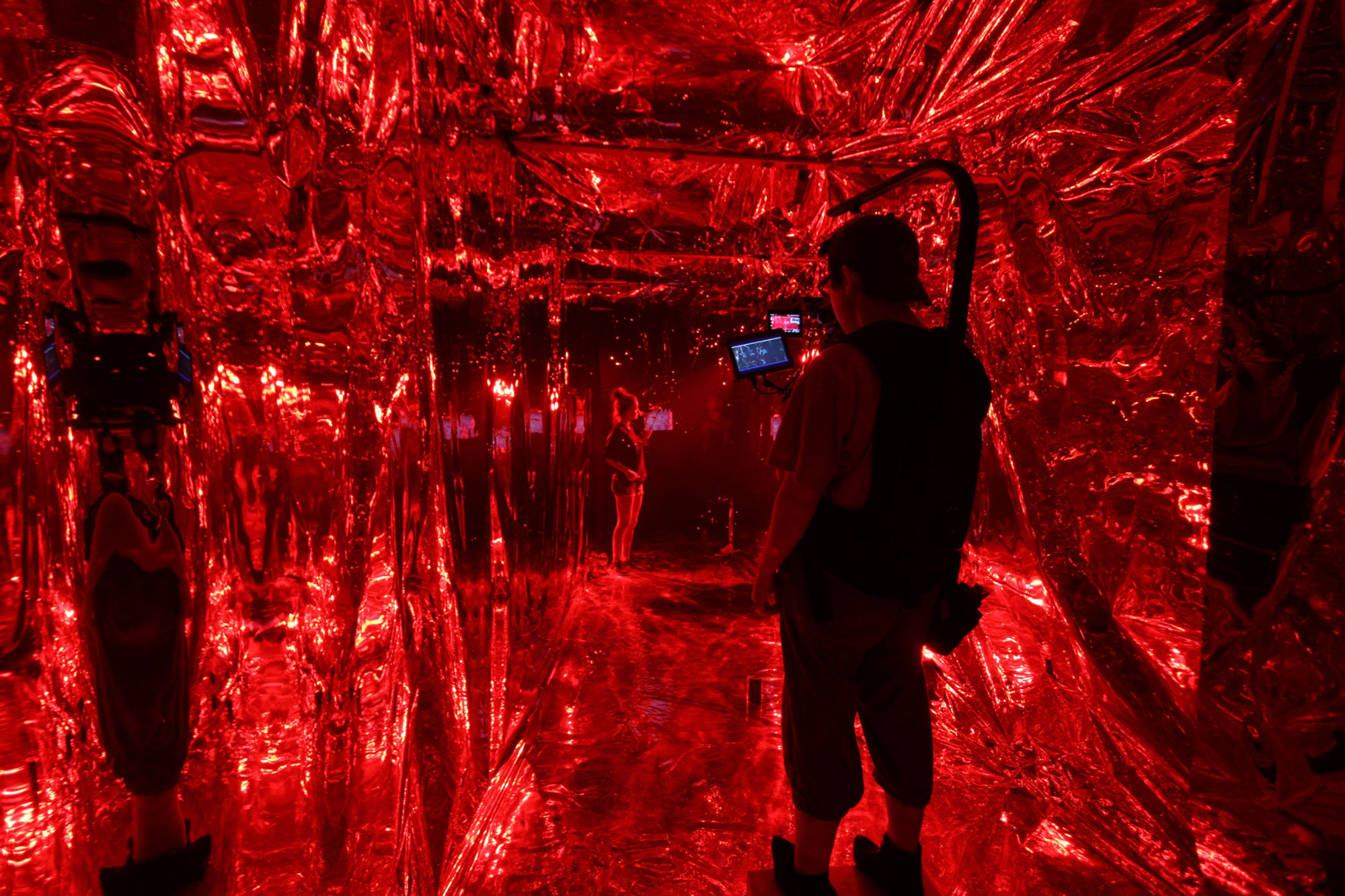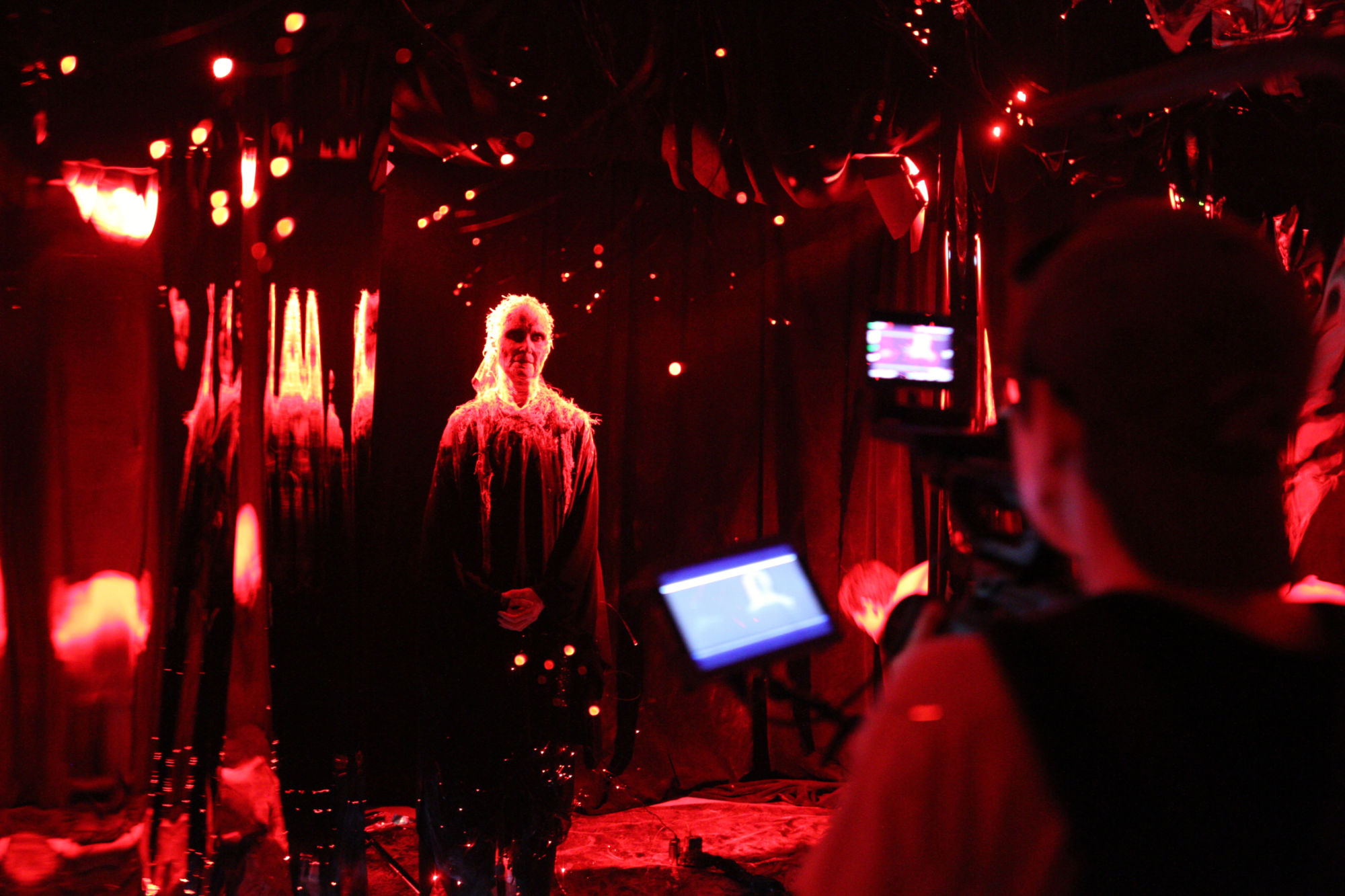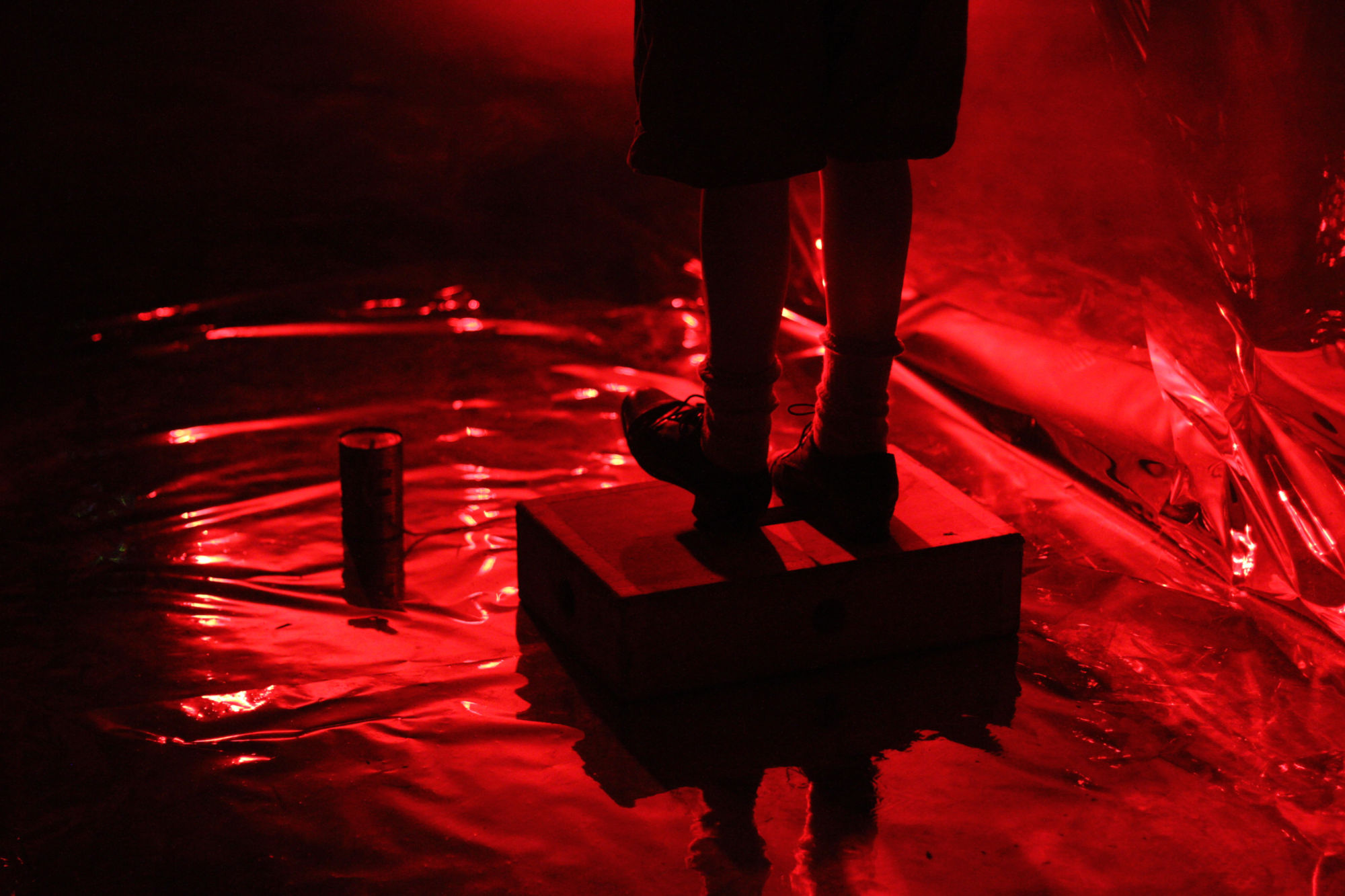
Set in rural Canada during the summer of 1937, Wild from Toronto-based filmmaker Morgana McKenzie (whose cinematography we admired in Leo Pfeifer’s drummer doc Lost Time) introduces us to Ida – a young girl isolated from those around her by language who forms a connection with the thing living in the corn field near her home. Making its online debut here on Directors Notes today, we sat down with Morgana to discover the origins of this dark fairy tale and how she used practical effects, along with stylistic colour and lighting elements, to seamlessly place the otherworldly within an authentic period setting.
What was the initial inspiration for Wild and how did the story develop over time?
The initial inspiration was from a Ray Bradbury short story called The Ghosts. I had written a few scenes and a rough outline of the script, approaching it as a short I intended to develop into a feature. But aside from my mental visual of a girl (Ida) befriending an entity in a cornfield, I was having a hard time finding the heart of the story and who this little girl was.
All of this was before my 2017 music video Atlas World, where I first worked with actress Neve Guenette whose first language is French – which opened the door to rework the Wild story around language as a way to isolate Ida and make her so vulnerable and willing to leap for a new, possibly dangerous friendship. The film is very true to the period and the rural region in Canada where the two languages of the country meet.
While I was excited to tackle the huge challenges that come with pulling off a period-piece on a modest budget, I was motivated to shoot a non-traditional period piece – something that didn’t fit the typical mold, mixing bold lighting styles inspired by films like Suspiria and Neon Demon. I also wanted to combine the expected muted look of period visuals in Ida’s world with bold lighting and colours for the entity’s world at night.
For me, the best way to tell a story like this is through the eyes of a child. Children offer a unique outlook on the world around them. Wild gives us small vignettes, painting Ida’s day to day in moments, leading up to longer more stylized scenes taking place in the dark of the night.

Wild marks Nève Guénette’s debut narrative role, what about her performance in your earlier music video convinced you she was right for the lead here?
When casting my 2017 music video Atlas World, I had the girls audition a scene from the unfinished Wild screenplay. Neve’s audition was shockingly good, the kind of performance that sticks with you throughout a long day of auditions. She clearly had talent, but no formal training, which I consider a positive. I’ll frequently see child actors at this level who over-act based on what they think the character should be or based on the training they’ve received for stage acting. Part of why I enjoyed working with Neve was her ability to respond and process direction internally, not just externally; acting through feeling, rather than focussing on how her performance looks.
I was motivated to shoot a non-traditional period piece, something that didn’t fit the typical mold.
How did you create the mix of period detail and otherworldliness required for this story?
After spending so much time doing it, balancing my time as a director and cinematographer has become something I’ve gotten used to. But for this film in particular, it meant thorough prep in pre-production was crucial to smooth shoot days.



Having a corn field was integral to the movie, so by ridiculous luck and generosity, the neighbours of our final location grew a corn field in the backyard just for the film. Finding a 1930s farm house with cornfield on the property was a crazy goal and I’m still amazed we pulled it off. The bedroom we used was originally a neon green craft room. My friend from art school hand printed a new paint/wallpaper to make the space period accurate. The majority of our set dressing/pieces were loaned to us from a local heritage museum near our location, meaning everything was period accurate to exactly our location.
I’m a huge advocate in approaching world building and effects practically. This was especially important for our void scene, which we approached entirely practically aside from minor enhancements in post. A pain to plan, but in the end, a pretty simple setup/tear down! Down a long mylar sheeted hallway, we hung end-emitting fibre optics from overhead, creating a long “liquid-mirror” hallway, black fabric setup at either end. Two L-7s (650W) beaming into the tunnel from one end. Fibre optics were also sewn into the Entity’s dress for added contrast.





As you mentioned earlier, Ida’s encounters with the Entity punctuate the period setting with bold colour and lighting. Could you explain how you used those stylistic elements to express the growing connection between the two characters?
Part of this girl’s journey is discovering the language of the Entity. Language was a huge part of this film. Ida doesn’t speak English; the primary language of the area within rural Ontario, but she spoke French. She’s isolated, and when given the chance for a new friendship, nosedives. An 11-year-old in 1930s rural Canada is playing with something far out of her control, and establishing a clear way to communicate language, a connection, between these two characters was key.
For me, the best way to tell a story like this is through the eyes of a child. Children offer a unique outlook on the world around them.
In our night scenes where Ida communicates with the Entity, we decided to hail to the natural darkness of the cornfield, and let the real light come from the emotions and language from the Entity. This took form in washes of blue or red light, evoking emotions of love or anger. These light effects were also done practically on location. However once in post, we subtly enhanced our practical lighting effects to ensure they packed the punch we needed.


Once in post, my editor and close collaborator Leo Pfeifer worked remote while in Seattle and we cut the film entirely over Skype screen share.
What will we see from you next?
I recently signed with Vanguarde Artists Management, meaning my time has been almost entirely consumed with my work as a cinematographer on narrative and non-narrative projects. In terms of my own projects, I’m hoping to shoot my next narrative short within the coming year. My focus has been split between a smaller piece called Bowlerama, a 1950s supernatural short, and a larger feature called Homebodies. Both shorts have a particular focus on children and approaching lighting as a character and story tool within each world.


